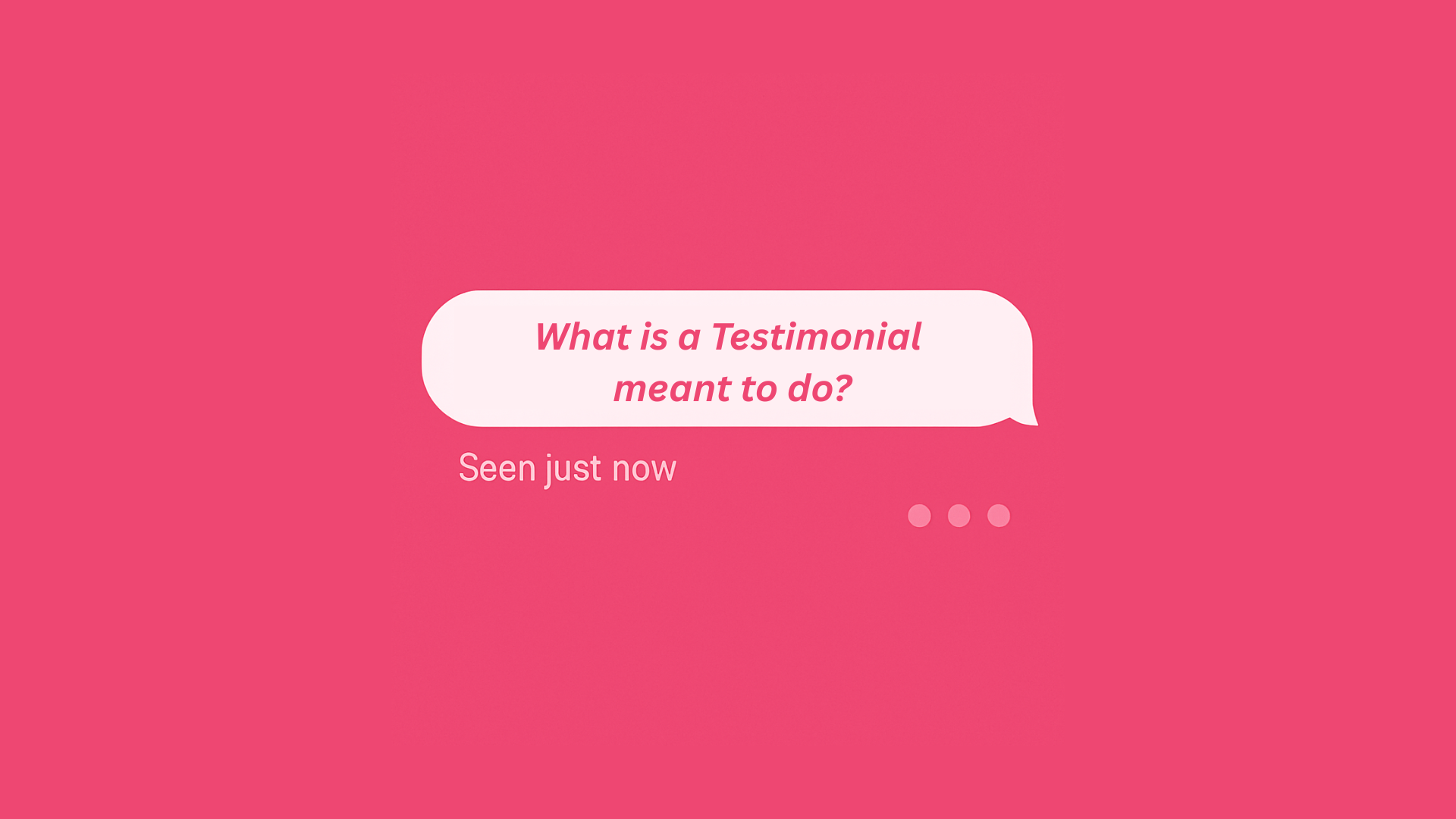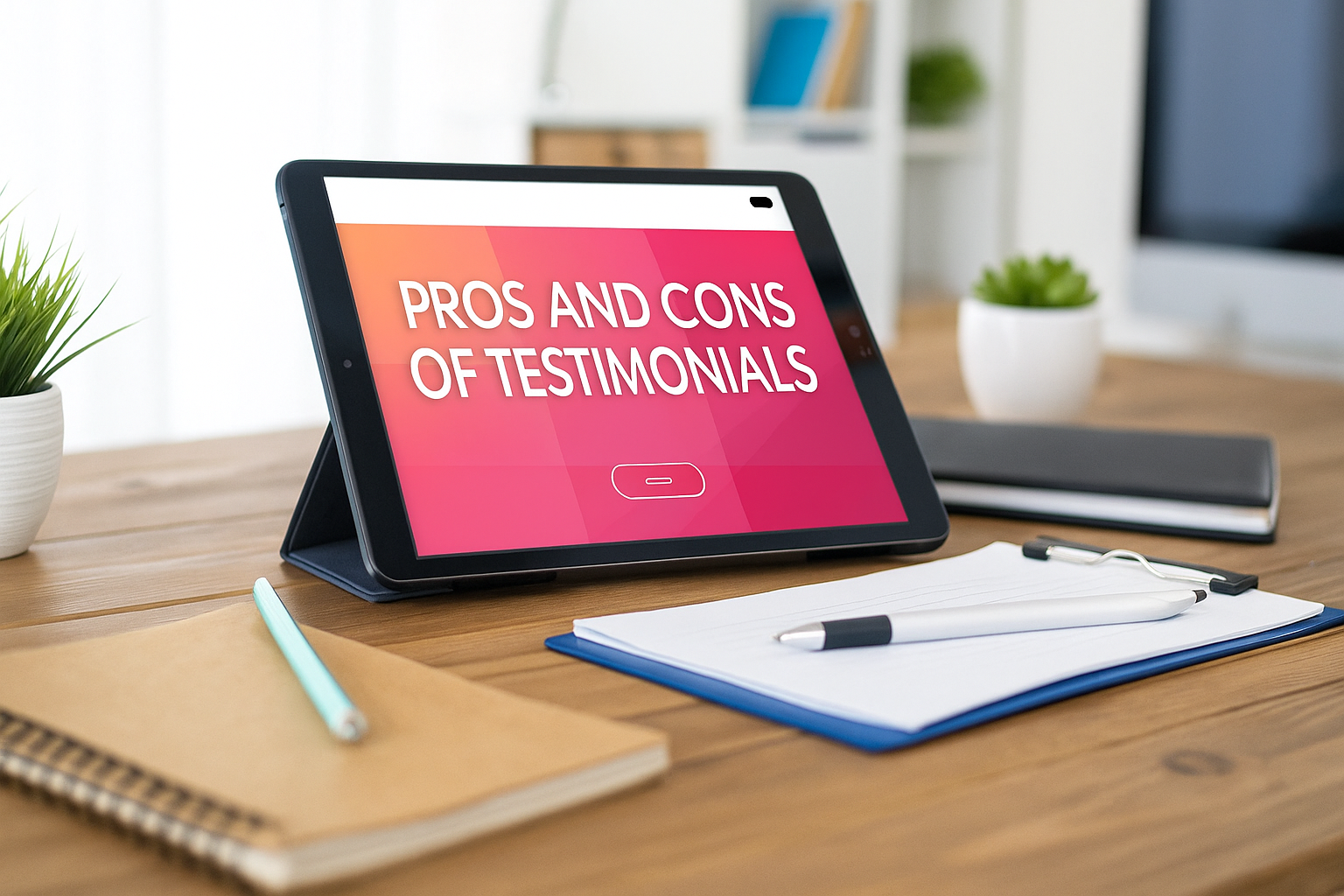Table of contents
Let’s get something straight: a testimonial isn’t just “nice to have.” It’s not the cherry on top of your marketing sundae. It’s the whole damn scoop.
If you’re still treating testimonials like background decoration, that’s like having Beyoncé as your wedding singer and forgetting to turn on her mic.
So, what is a testimonial meant to do?
It’s meant to sell. Persuade. Build trust. Crush doubt. Create emotional buy-in. And do it all without you having to scream “LIMITED TIME OFFER!” into a void.
In this article, we’re going to slice through the fluff and get brutally honest about what testimonials do, and how you’ve probably been underusing them.
Along the way, we’ll drop stats that should punch you awake, stories that hit too close to home, and weirdly obvious truths you probably never noticed.
Let’s go.
Building Trust and Credibility
Here’s a fun psychological fact: humans are walking contradictions. We say we trust “authentic brands,” but the second we see a company praising itself, our BS detectors go haywire.
That’s why we trust strangers on the internet more than the companies selling the product.
It sounds stupid until you realize how smart it is. It’s our brain’s way of saying: “Don’t trust the person who benefits from convincing you.”
Enter: the testimonial.
A testimonial is a marketing loophole. It’s the customer doing the talking for you. It’s social proof in its most powerful form because it’s unfiltered. It’s real.
Need numbers to believe it? Try these on for size:
- 90% of people trust recommendations from people they know.
- 70% trust online reviews from people they’ve never met.
So yeah, what is a testimonial meant to do? It’s meant to be that voice in your customer’s head saying, “Hey, this worked for me. You’re not crazy for considering it.”
But here’s the kicker: it has to feel human. No one trusts a testimonial that sounds like it was written by a PR robot in a blazer. “Your solutions helped optimize our deliverables…” No. Nobody talks like that.
Want to build trust and credibility? Ditch the buzzwords. Use faces. Use names. Use relatable people saying honest things.
Because when a real person says, “This saved my butt during tax season,” that’s the testimonial magic.
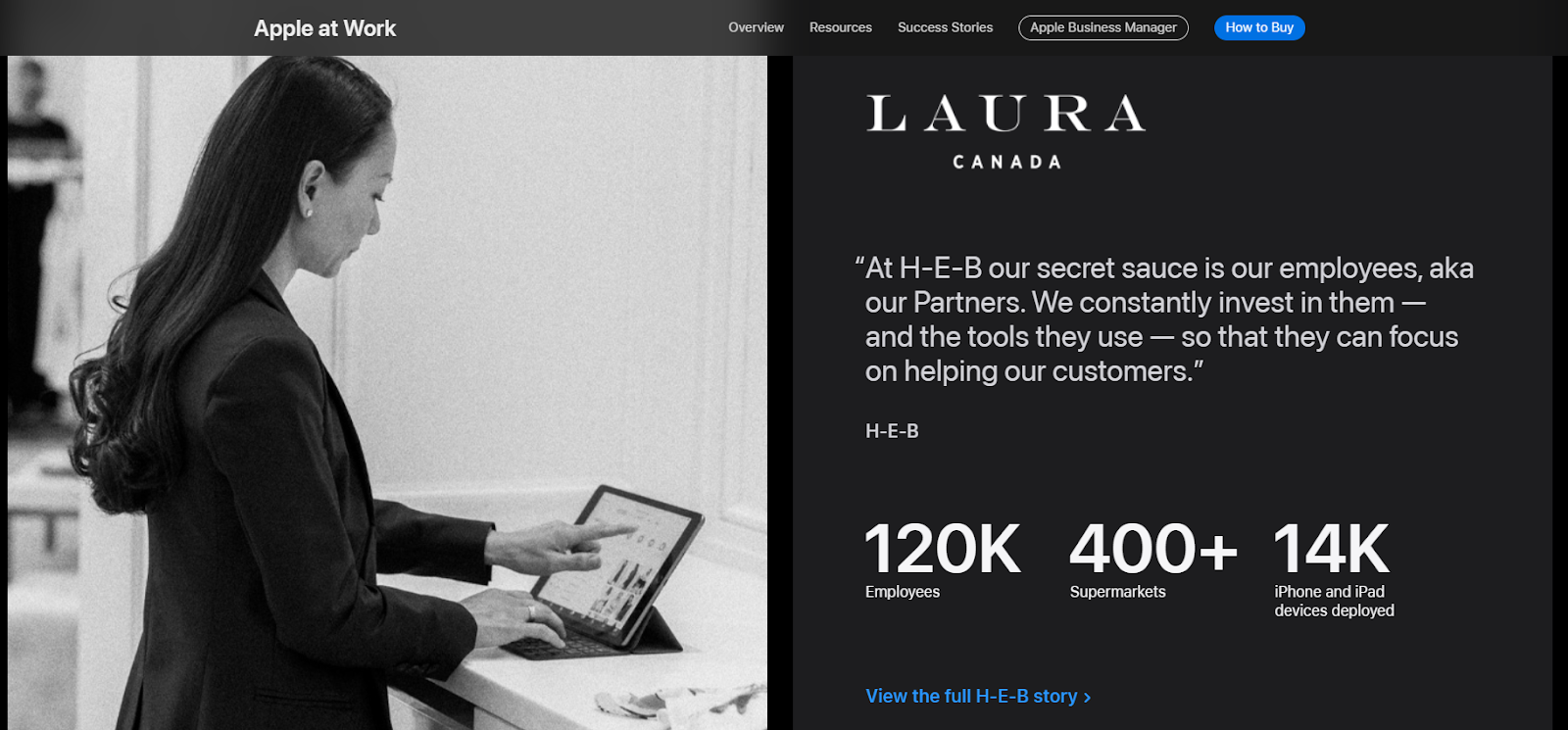
👉 Need inspo? Check out these testimonial page examples.
Overcoming Buyer Hesitation
Let’s play a quick mental game.
A lead is reading your sales page. They're nodding. They're interested. Then… they pause.
“Will this even work for me?”
That pause is the graveyard of conversions. Buyer hesitation kills more sales than bad pricing ever will.
That’s where testimonials swoop in like social proof superheroes.
When someone reads, “I was skeptical too… but this saved my sanity,” their brain goes, “Okay, this might be safe.”
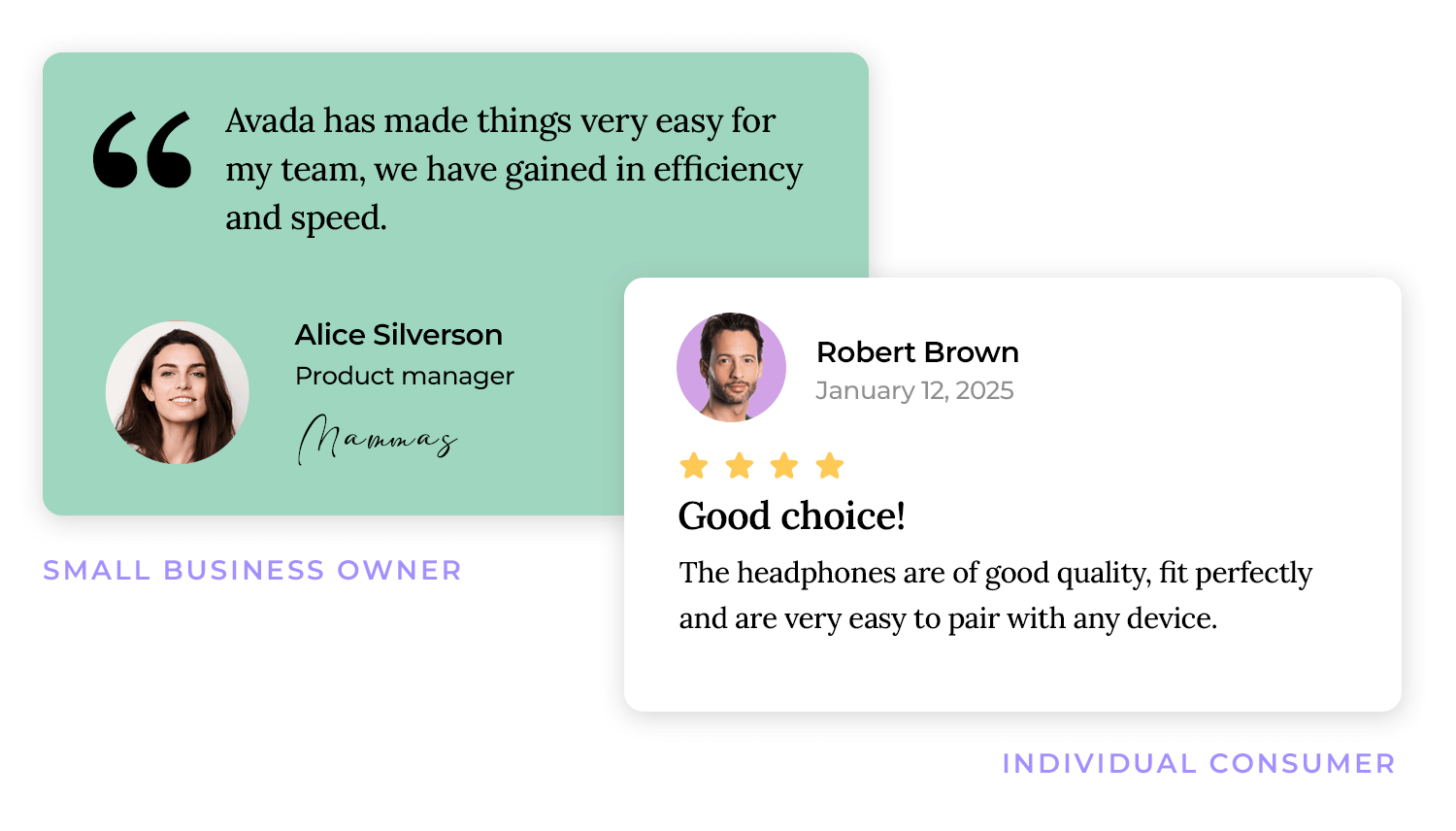
77% of people say they always read reviews before making a decision. Your leads are out there, actively looking for proof they won’t regret trusting you.
Meaning of testimonials…
So let’s break down the testimonials' meaning here:
It’s not about praise. It’s about reassurance. It’s someone saying, “I had your doubts. I leaped. It paid off.”
That’s powerful.
In marketing, someone may also refer to testimonials as testimonies.
What does testimonies mean? Testimonies, exactly like testimonials, are real stories or statements from customers who’ve used your product or service, sharing their honest experience.
Testimonials crush hesitation by proving one simple thing: this works for people like you.
Need help collecting these wins? That’s what Testimonial Donut was built for.
Demonstrating Real-World Results
Here’s a universal truth: people don’t care what your product does.
They care what it did for someone else.
You can say, “We streamline workflows.”
Alternatively, you can display a testimonial that states, “We cut our invoice time from 4 hours to 40 minutes.”
Guess which one converts?
What is user review content supposed to do? It’s supposed to paint the before-and-after picture. It shows the transformation. The result. The win.
And it works:
- Pages with testimonials convert 34% better
- Listings with real user reviews get up to 38% more sales
So, no, testimonials aren’t a vanity play. They’re proof.
Showcase wins with specifics. Better yet, use video, social screenshots, or even a case study quote with the client’s permission.
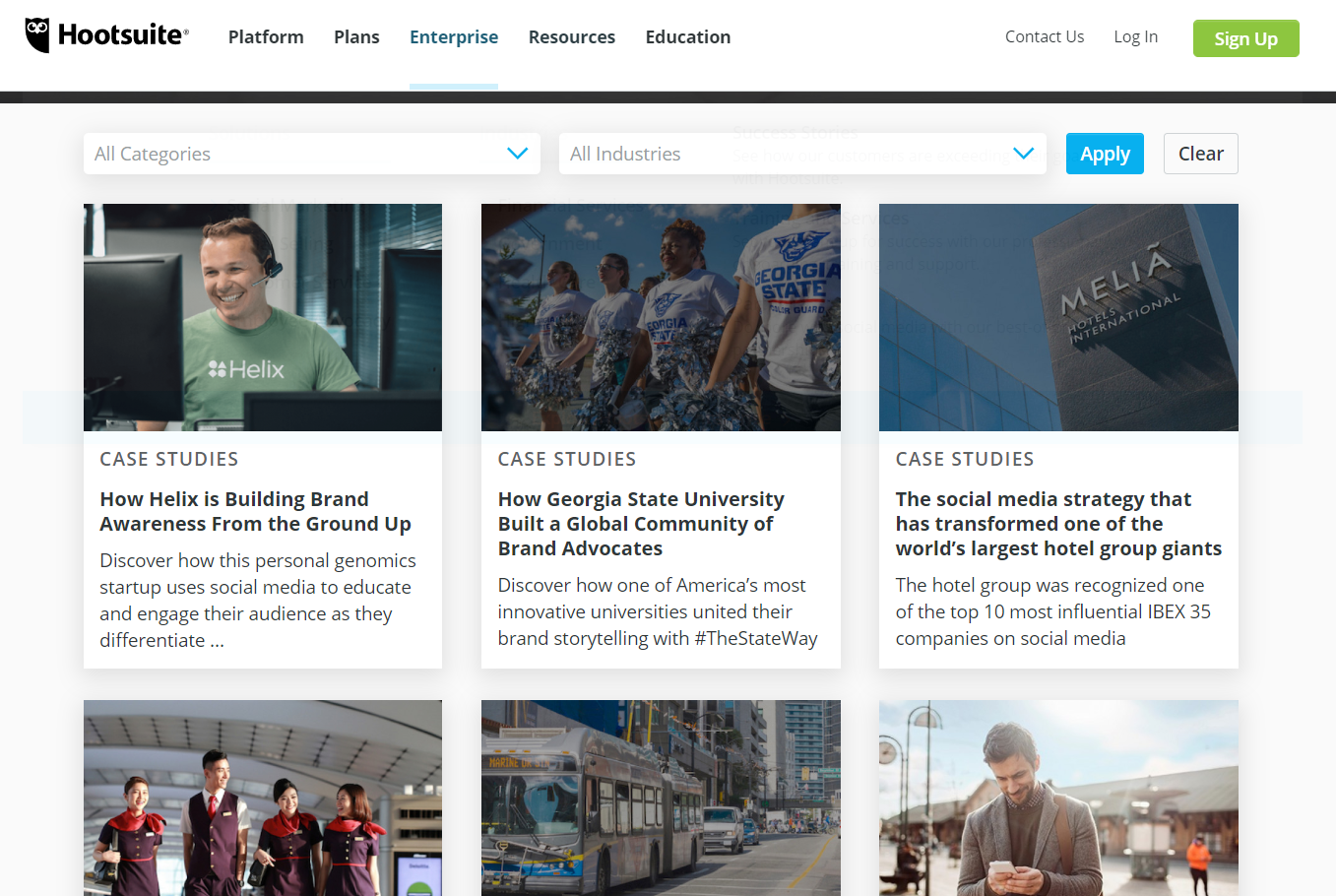
Want examples of how the pros do it? Here’s a goldmine: Best testimonial examples to learn from.
Strengthening Emotional Connection
You know what people don’t remember? Feature lists.
You know what they do? Stories.
What is a testimonial meant to do, emotionally? It’s a storytelling tool. It says, “This brand didn’t just work, they changed my life.”
It’s a burned-out founder saying your app gave them back their weekends.
It’s a new mom crying because your product helped her sleep through the night.
It’s that freelancer who finally landed a client because of your software.
People don’t buy logic. They buy feelings. Testimonials bridge that gap.
This is where you inject your brand with humanity. Let customers speak their truth. Don’t polish it too much. The imperfections are the magic.
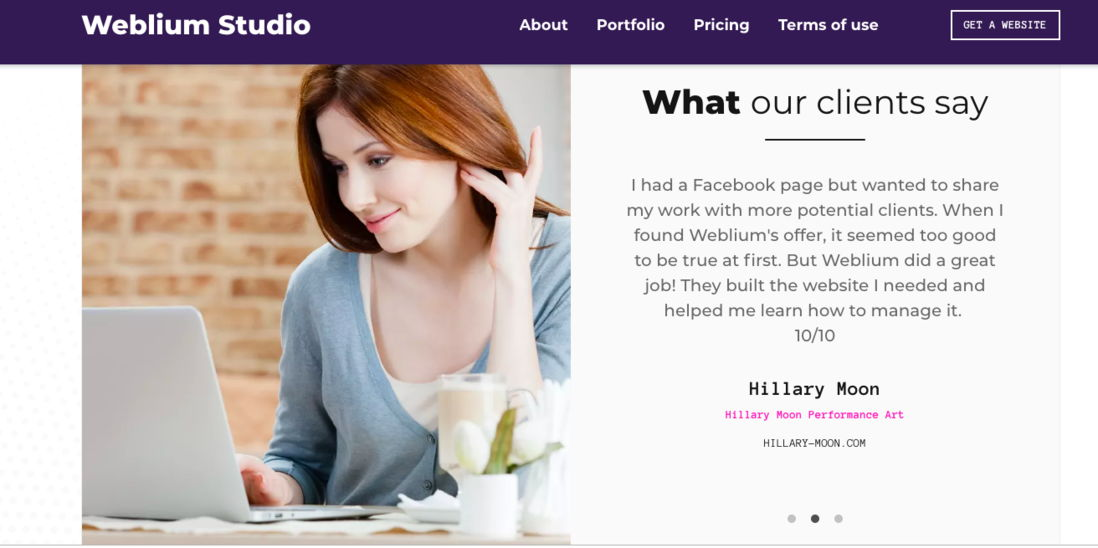
If you want a blueprint for emotional resonance, study our article on branding through storytelling. (Your competitors already have.)
Boosting Conversions and Sales
You want real ROI? Here’s a truth bomb:
If you’re not using testimonials in your sales funnel, you’re leaving cash on the table and maybe setting it on fire for good measure.
Testimonials don’t just support conversions. They drive them.
A great testimonial, placed right before your CTA, is like a customer whispering to a lead, “I promise, this changed my life. Try it.”
Data agrees:
- 85% of people say reviews influence their buying decisions
- Testimonials in email campaigns boost response
- Pages with social proof? More clicks, more trust, more money
That’s why Amazon doesn’t even try to sell anything without reviews. They know better. You should, too.
So start plugging in those quotes:
- One-liner on your pricing page
- Full-blown story in your pitch deck
- Screenshot in your Facebook ad
Because again, what is user review content if not a conversion engine in disguise?
Differentiating a Brand from Competitors
You can say you’re “different.” Or you can prove it through the words of people who’ve already chosen you over the sea of sameness.
Define testimonials as your voice of differentiation.
Let your customers say what makes you special. Let them shout the things you’re too humble (or too jaded) to say yourself.
Example:
“We tried three other tools. They all broke. Yours didn’t. We’re staying forever.”
That’s not just a compliment. That’s a brand position.
Especially in saturated markets, testimonials are the difference. They don’t just say you’re better. They show why.
You can prove credibility by using well-known logos/names of previous clients.

Where to Use Testimonials for Maximum Impact
If your testimonials are buried on a “testimonials” tab, congratulations, you’ve created a museum of missed opportunities.
Testimonials should be everywhere people hesitate:
- Home page? Yep.
- Product pages? Absolutely.
- Pricing section? Critical.
- Checkout page? Essential.
- Email campaigns? Yes.
- Sales decks? Bring ’em.
- Instagram Stories? Do it.
Put them right before decisions. Pair them with CTAs. Use different formats: text, video, screenshots, even voice memos.
Remember, testimonials aren't filler content. They’re decision-making fuel.
Final Thoughts
So, what is a testimonial meant to do?
It’s meant to build trust when your voice alone isn’t enough. It’s meant to crush doubt, inspire belief, and show your future customers what’s possible.
It’s meant to sell, quietly, persuasively, and authentically.
If you’ve been treating testimonials like a “nice extra,” now’s the time to change that mindset. Treat them like what they are: your most powerful form of marketing. Your most human content. Your most reliable converter.
So ask yourself:
Are your customers singing your praises in the background?
Or are you handing them the mic?
Because trust me, the world wants to hear them.
